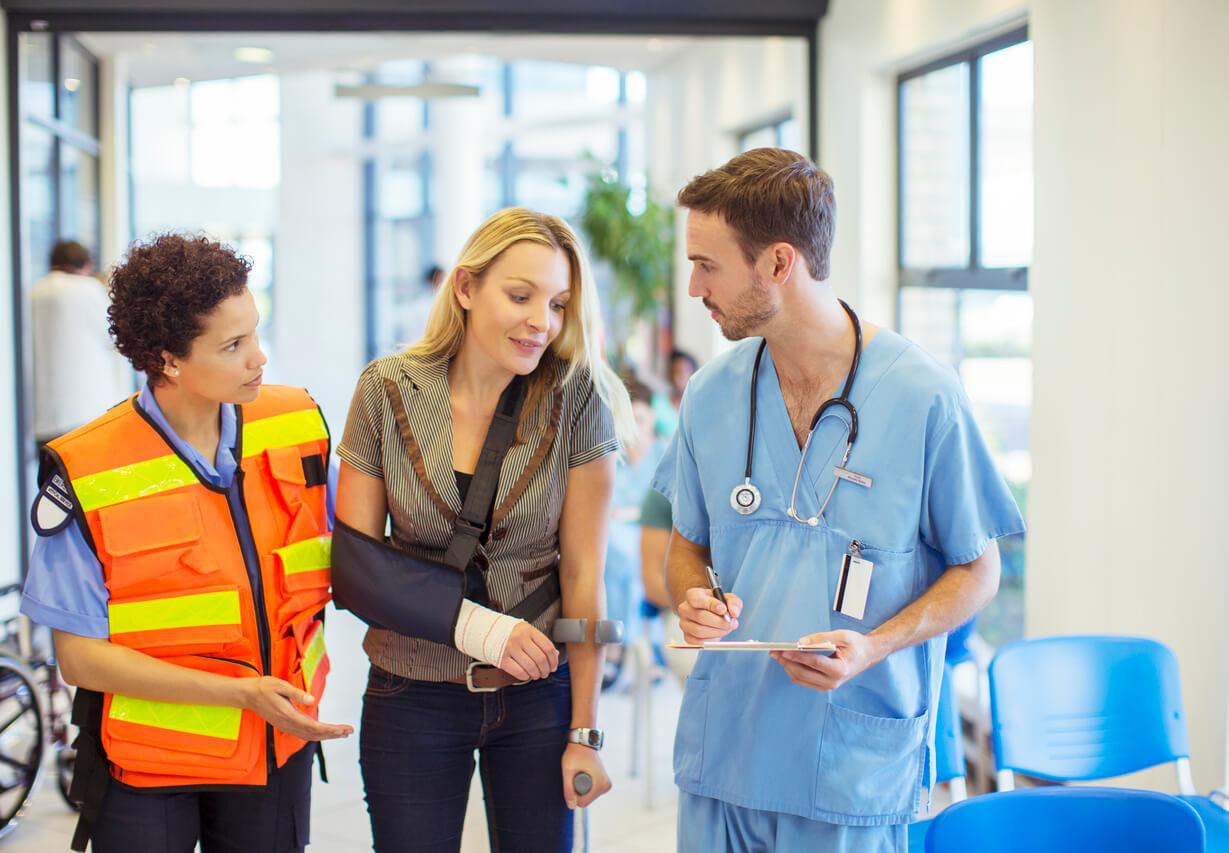Can a Belly Button Infection Kill You?
Whether you have an “innie” or an “outie,” everyone has a belly button (the small skin fold on your stomach that marks the spot where your umbilical cord was attached when you were in your mother’s stomach). This means that everyone is also susceptible to a belly button infection.
Belly buttons have lots of folds, so it’s easy for sweat, dead skin cells and microorganisms to build up inside of them. A belly button infection is a skin infection caused by fungus or bacteria that are proliferating inside your belly button (known medically as your umbilicus). So how serious are belly button infections, and can they be fatal?
What causes a belly button infection?
Belly button infections occur when bacteria or fungi infect the skin of the belly button. This can happen due to poor hygiene, ingrown hairs or an allergic reaction to jewelry or other objects that come into contact with the area. Yeast and bacteria occur naturally in certain areas of your body (particularly damp, warm dark areas where these organisms thrive). If you don't clean your belly button regularly, those microorganisms can grow rapidly and cause an infection.
You can avoid most belly button infections by washing your belly button frequently with soap and using a cotton swab or washcloth to ensure that it’s completely dry.
What are the different types of belly button infections?
The term “belly button infection” can actually refer to a number of conditions. The infection can be caused by different types of bacteria, yeast, or even cysts. Here are some of the most common types of belly button issues:
Belly button yeast infection: A belly button yeast infection (candidiasis) is a type of fungal infection that affects the skin around the belly button. Belly button yeast infections occur when there is an overgrowth of Candida yeast in the area. This can be caused by poor hygiene, wearing tight clothing or belly button piercings that traps moisture. It can also be a result of a weakened immune system, or taking antibiotics that disrupt the natural balance of bacteria and fungi in your body.
Some studies have shown that yeast infections are more common in those with diabetes. This is because yeast feeds off of sugar, and those with diabetes often have increased or unmanageable blood sugar levels. Symptoms of a belly button yeast infection include redness and itching around the belly button, flaky or peeling skin, and small bumps or blisters. Treatment typically involves keeping the area clean and dry, and using antifungal creams or ointments as directed by a healthcare professional.
Bacterial belly button infection: A bacterial belly button infection is a type of infection that occurs when bacteria enters the skin around the belly button, causing inflammation and other symptoms. This can happen due to poor hygiene, a recent belly button piercing, injury or surgery to the area, or an underlying medical condition that weakens the immune system.
Symptoms of a bacterial belly button infection include redness, swelling, pain, discharge from the belly button, and fever. Treatment typically involves keeping the area clean and dry, applying antibiotic ointments as directed by a healthcare professional, taking oral antibiotics if necessary, and addressing any underlying medical conditions that may be contributing to the infection.
Omphilitis: Omphilitis is a bacterial belly button infection that primarily occurs in newborn infants during the first 4 weeks of their lives (the neonatal period). It can be caused by bacteria such as Staphylococcus aureus, group A streptococcus, Escherichia coli, and others.
Omphalitis can rapidly progress into a serious and even deadly infection. If you or a caregiver notice symptoms such as abdominal swelling, discharge, or a red rash around your child’s belly button or umbilical stump, seek immediate medical attention.
Belly button staph infection: Belly button staph infections are caused by a type of bacteria called Staphylococcus bacteria. It can manifest as abscesses (pockets of pus under the skin) or non-bullous impetigo and bullous impetigo, two conditions that lead to crust and sores.
Belly button strep infection: Belly button strep infections are caused by a type of bacteria called Streptococcus bacteria. This type of infection can lead to conditions such as impetigo and cellulitis and can spread beyond your skin into your tissues. If you notice fever, chills, or swollen lymph nodes, contact your doctor right away.
It is also possible to develop a belly button infection from skin conditions like epidermoid and pilar cysts. Cysts are small pockets of air, fluid, or other substances that can develop on the top layer of skin (epidermoid cyst) or around a hair follicle (pilar cysts). Cysts themselves are not considered bacterial infections.
However, they can sometimes fill with bacteria and pus and turn into an infection. If you notice a cyst, don’t mess with it (tempting as it may be). Trying to pop or drain a cyst on your own can create more problems. Instead, contact a dermatologist or healthcare provider to assess the cyst and drain it if necessary.
What are the symptoms of a belly button infection?
If you have a belly button infection, it’s likely that you will exhibit at least one of the following symptoms:
- Redness or swelling around the belly button
- Pain or discomfort in the area
- Itching
- Discharge or pus from the belly button
- Foul smell
- Blistering or peeling around the area, especially with piercings
If you notice any of these signs (or other symptoms that cannot be explained), you should contact your doctor to discuss diagnosis and treatment.
Can a belly button infection be serious?
If left untreated, some belly button infections can become serious. As mentioned above, some infections are caused by bacteria that can spread to other parts of your body (including organs and blood), causing sepsis and other deadly conditions.
It’s important to note that belly button infections are not the same as belly infections. Peritonitis, an infection that causes swelling in the lining of your belly or abdomen, is an internal infection that is most often caused by a hole in the bowel or a burst appendix, not an external skin condition.
How do I treat a belly button infection?
Treatment for a belly button infection typically involves cleaning the area thoroughly and then applying topical antibiotics or antifungal medications as prescribed by a healthcare professional.
To clean your belly button properly, dip a cotton swap or wash cloth in warm, soapy water. Make sure the soap is fragrance-free to avoid irritation. Then gently swab your belly button, rinse it out with water, and pat it dry. Make sure not to leave any excess moisture behind!
If you have recently had your belly button pierced, it is also recommended that you treat the area daily with a cotton swab dipped in rubbing alcohol to keep the area sanitary.
Read on to learn about OTC and prescription medication options for belly button infections.
OTC medication for belly button yeast infections
If you are exhibiting symptoms of a belly button yeast infection such as white discharge or an itchy red rash, your doctor may suggest trying over-the-counter antifungal medication. Your healthcare provider may recommend an antifungal cream, ointment or powder such as miconazole nitrate (Micatin, Monistat-Derm) or clotrimazole (Lotrimin, Mycelex) to apply directly to the skin of your belly button.
OTC medications for bacterial belly button infections
If you are exhibiting symptoms of a bacterial belly button infection such as redness, blisters, crusting, or brown or green belly button discharge, your doctor may suggest trying an over-the-counter topical antibiotic cream such as Polysporin (bacitracin/polymyxin B), Neosporin (bacitracin/neomycin/polymyxin B), or bacitracin.
If this medication does not seem to be alleviating symptoms after a few days, you should contact your doctor as it is likely that prescription-strength antibiotics will be needed.
Prescription medication for belly button yeast infections
Most skin yeast infections are treated successfully with proper use of topical, over-the-counter ointments. However, if over-the-counter antifungals do not seem to be working, your healthcare provider may ask that you get re-evaluated in person. They also may recommend a prescription-strength antifungal, such as:
- Topical ketoconazole (depending on preparation, this is available both OTC and Rx)
- Topical ciclopirox
- On occasion, an oral antifungal such as fluconazole, itraconazole, or terbinafine
Prescription medication for bacterial belly button infections
If over-the-counter antibiotic medicine does not seem to be working, your healthcare provider may want to touch base with you either in person or via a virtual visit. They may recommend a prescription-strength oral antibiotic, such as:
When should I go to the doctor for an infected belly button?
If your belly button infection symptoms do not improve with over-the-counter treatment or if they get worse, it’s recommended that you see a doctor. You should seek medical attention immediately if you experience any signs of complications, such as:
- Fever
- Chills
- Nausea or vomiting
- Red streaks spreading from the infected area
- Severe pain
Your doctor can examine the area and determine the best course of treatment for your specific case. This may include antibiotics, antifungals or other medications.









